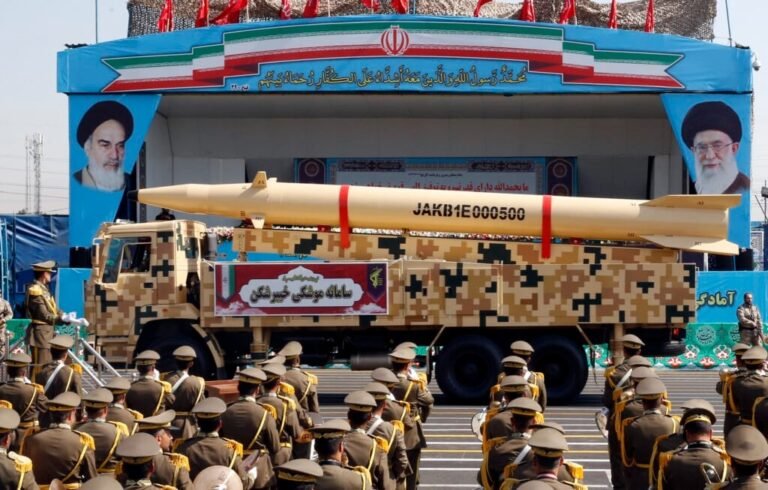The Kheibar Shekan missile is Iran’s latest addition to its growing arsenal of advanced ballistic missiles. Developed by the Islamic Revolutionary Guard Corps (IRGC) Aerospace Force, this third-generation missile marks a significant leap in Iran’s military capabilities. First unveiled in February 2022 during a military exhibition, the Kheibar Shekan missile quickly attracted attention for its modern design, solid-fuel engine, and strategic importance in the region.
The name “Kheibar Shekan” means “Kheibar Destroyer” in Persian, a direct reference to the historic capture of the Kheibar fortress by Muslim fighters in the 7th century. This naming holds strong symbolic meaning, particularly directed toward Israel. Iran’s use of the missile name signals a clear political and ideological message. It reflects Tehran’s continued stance in its long-standing conflict with Israel and its desire to present strength through symbolism as well as military capability.
Technically, the Kheibar Shekan missile is a medium-range ballistic missile (MRBM) with an estimated range of about 1,450 kilometers. One of its most advanced features is its solid-fuel propulsion system. Unlike older liquid-fueled missiles, solid fuel allows for faster launch readiness and greater mobility. This makes it harder to detect before launch and provides the Iranian military with increased flexibility in how and where it can deploy the weapon.
The missile is designed for high accuracy and destructive power. It can carry multiple warheads, allowing it to strike several targets at once or cause extensive damage to a single high-value location. The IRGC has stated that it can bypass modern air defense systems by flying low and fast during its terminal phase. Its reduced radar signature in the final moments of flight makes it especially difficult to intercept. Military experts have noted that this feature alone places the Kheibar Shekan missile in a class of highly threatening strategic weapons.
Iran used the missile for the first time in combat in June 2025, during a major missile strike on Israel. This attack followed U.S. airstrikes on Iran’s key nuclear facilities at Natanz, Isfahan, and Fordow. In retaliation, the IRGC launched 40 ballistic missiles, including the newly introduced Kheibar Shekan. The missile targeted critical infrastructure in Tel Aviv and Haifa, such as Ben Gurion Airport, military command centers, and defense-related buildings. According to Iranian reports, the missile performed with high precision and caused extensive damage to the intended targets.
The deployment of the Kheibar Shekan missile in an actual conflict setting demonstrated Iran’s willingness to escalate tensions using advanced military technology. The decision to use this missile not only marked its operational debut but also sent a strong message to Israel and the United States. Iran showed that it possesses the capability to retaliate with accuracy and speed. By using a missile with such advanced features, Iran raised concerns among regional and global powers about the potential for a broader conflict if further escalations occur.
The solid-fuel nature of the missile also means that Iran can maintain a mobile and hidden arsenal, launching missiles from undisclosed locations with minimal preparation time. This has made the missile more difficult to track or neutralize before launch. Its multi-warhead capability further enhances its threat profile, as it can be used to target large areas or critical systems in a single strike.
The Kheibar Shekan missile is more than just a weapon. It represents a shift in Iran’s military strategy toward faster, more accurate, and harder-to-detect missile systems. It demonstrates Iran’s continued efforts to build a modern missile program that rivals those of other regional powers. With the successful combat use of the Kheibar Shekan missile, Iran has revealed a new level of strategic readiness and has set the stage for a possible new chapter in the Middle East’s military balance.







